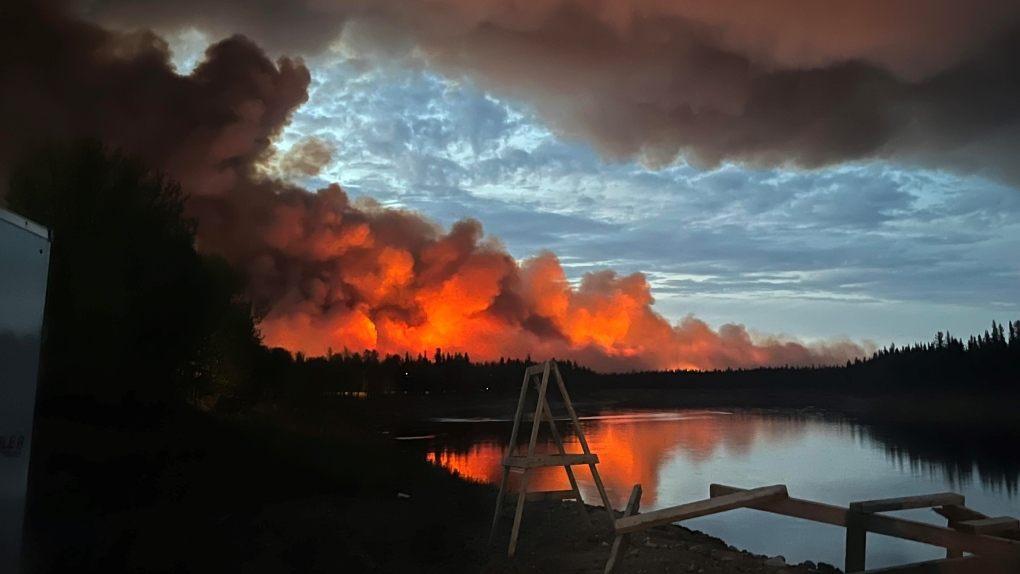Massive Wildfires Force Thousands to Flee as Smoke Spreads to U.S.
Huge wildfires burning out of control in western and central Canada are forcing thousands of people to leave their homes. The fires are also sending dangerous smoke into the United States.
The premiers of Manitoba and Saskatchewan have declared states of emergency. On Thursday, large parts of Canada—from the Northwest Territories and Alberta to Quebec—were at “extreme” risk for wildfires, the highest level on the government’s fire risk scale.
As of Thursday, there were just over 160 wildfires burning across Canada. About half of them are not under control, according to the Canadian Interagency Forest Fire Center. Canada has now raised its National Preparedness Level to the highest level, 5 out of 5. That’s unusual for this early in the season—it didn’t happen until mid-July last year.
In Manitoba, around 17,000 people have had to evacuate, including residents from Flin Flon, Cross Lake, Pimicikamak Cree Nation, and Mathias Colomb Cree Nation. Manitoba Premier Wab Kinew said the state of emergency will last a month and could be extended. He called this “a moment of fear and uncertainty” and said it’s the largest evacuation in most people’s memory.
“But I want to tell you that your fellow Manitobans will welcome you,” Kinew said. “We’ll get through this by working together.”
Saskatchewan is also facing major problems. Thousands of people have evacuated there too, and Premier Scott Moe declared a 30-day emergency on Thursday. He said the province badly needs rain.
Experts say climate change is making wildfires worse. It’s causing more days with high fire danger, bigger fires, and more extreme fire behavior.
Canada had its worst wildfire season ever in 2023. Fires that year burned over 45 million acres, helped by heat and drought. Some of that smoke also spread into U.S. cities.
This year, wildfires in Canada have already burned more than 1.58 million acres—about 40% more than the 10-year average for this time of year. Most of the burned land is in Saskatchewan and Manitoba, though fires are also active in British Columbia and Alberta.
Smoke Reaches the U.S.
Computer models show that smoke from Canada’s fires is reaching U.S. cities like Green Bay, Milwaukee, Chicago, and Detroit on Thursday and Friday.
The smoke is mostly in the lower and middle parts of the atmosphere. That can lower visibility and make air quality worse.
Minnesota has already issued an air quality alert for the northeast part of the state. The smoke there is expected to reach levels that are unhealthy for everyone. A similar alert has been issued in northern Michigan for Friday.
Some of the smoke may stay over the Midwest through the weekend. Smoke high up in the atmosphere is also expected to spread south over the Plains. That smoke won’t affect air quality, but it may cause hazy skies and colorful sunrises and sunsets.
Experts say this could be the first of many smoky days this summer. Canada’s forecast predicts more fires than usual, and much of the western U.S. also faces a higher risk of wildfires by July.



